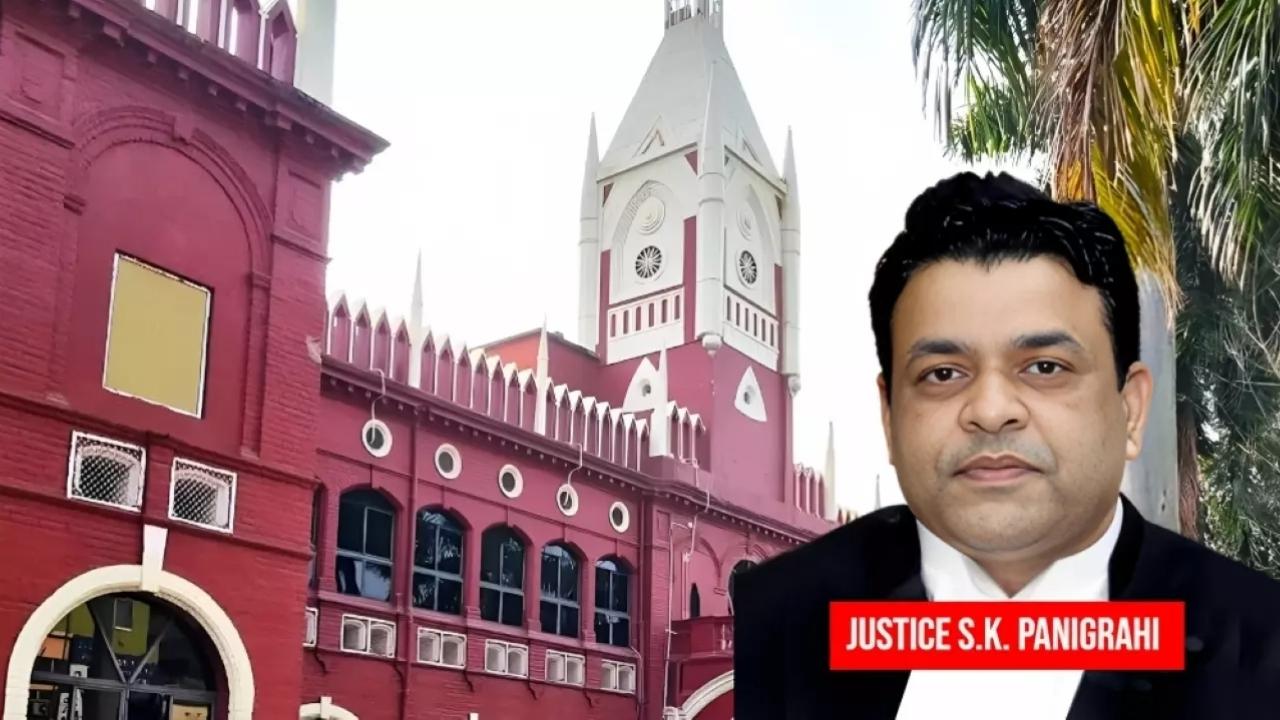The Orissa High Court recently confirmed the eviction of a religious structure situated on government land in Rajgangpur, a municipality in the Sundargarh district of Odisha, India. This decision, handed down on July 18, 2025, marks the end of a lengthy legal battle involving the unauthorized occupation of government land. The structure in question, associated with the Lal Baba Dargah (a shrine), had been in place for over 40 years. However, the court ruled that the occupation was not legally justified under the Orissa Public Premises (Eviction of Unauthorized Occupants) Act, 1972.

The case has brought forward important legal questions regarding the use of public land for religious or community purposes. It serves as a reminder of the importance of following legal processes and upholding the integrity of government property, even when the use is for religious or public purposes. Let’s break down the case and understand its implications, step by step, in simple terms.
Orissa High Court Confirms Eviction of Religious Structure
| Key Fact | Details |
|---|---|
| Court Decision | The Orissa High Court upheld the eviction order of an unauthorized religious structure from government land. |
| Date of Judgment | July 18, 2025 |
| Land Involved | Government land in Rajgangpur Municipality, Sundargarh district, Odisha. |
| Structure | Associated with the Lal Baba Dargah, a religious site. |
| Legal Basis | The Orissa Public Premises (Eviction of Unauthorized Occupants) Act, 1972. |
| Main Argument | The land, classified as a road within municipal limits, was ruled to be public property. |
| Impact | The ruling highlights the need for legal authorization when using public land for religious or community purposes. |
| Related Law | Orissa Public Premises (Eviction of Unauthorized Occupants) Act, 1972. |
| Link to Official Reference | New Indian Express: Orissa High Court ruling |
This case isn’t just about one religious structure, it’s about the broader implications of land use, community rights, and the law. Now, let’s dive deeper into the story.
The Orissa High Court’s decision to uphold the eviction of the Lal Baba Dargah from government land in Rajgangpur is a significant reminder of the importance of respecting public property laws. Even if a land use is for religious or cultural purposes, it must adhere to legal frameworks that protect public land for the benefit of all. This ruling emphasizes that unauthorized occupation of government land is not acceptable, no matter how long a structure has been in place.
If you are part of a community or religious group looking to build or use public land, it’s essential to understand the legal requirements and ensure you have the necessary permissions. By following the law and respecting the public nature of government land, you can avoid legal troubles and contribute positively to the community.
The Case Background
What Happened in Rajgangpur?
In the town of Rajgangpur, a structure connected to the Lal Baba Dargah, a popular religious shrine, had stood for over 40 years. It became a place where many locals gathered for religious and cultural events. However, the land on which it was built was not owned by the religious group; instead, it was government land, categorized as a “road” under local laws.
Around a decade ago, the government issued an eviction order under the Orissa Public Premises (Eviction of Unauthorized Occupants) Act of 1972. This Act allows for the removal of unauthorized occupants from public land, ensuring that government properties are used as intended – for public welfare and infrastructure.
But despite the passage of time, the shrine remained in place. The group responsible for the structure, along with a few local supporters, argued that the land was not truly “public” because it was classified as a “rasta” or road. They believed the law did not apply to the case, and thus they could continue occupying the land.
What Did the Court Decide?
In its ruling, the Orissa High Court rejected the petitioners’ arguments. The court stated that the land was indeed a public property and that, despite the religious significance of the structure, the occupation was unauthorized. Even though the land was being used for a religious purpose, the court clarified that unauthorized occupation of government land cannot be justified, regardless of the purpose.
The court also noted that the land was classified as a road within municipal limits, which solidified its public nature. The road could not be used for private purposes without legal authorization, and the fact that a religious structure had been built there did not make the occupation legal.
Why Does This Matter?
The ruling serves as a reminder of the importance of respecting public property laws. While many of us have a deep connection to the land we live on, it is critical to understand that government-owned land must be managed for the greater good. Using public land for unauthorized purposes, no matter how noble the cause, can create legal complications and disrupt the proper management of public resources.

Breaking Down the Legal Framework: Understanding the Act
The Orissa Public Premises (Eviction of Unauthorized Occupants) Act, 1972, is a key piece of legislation governing the use of public land in Odisha. Here’s how it works:
What is the Orissa Public Premises Act?
The Act was introduced to deal with the unauthorized occupation of government land. The law outlines the procedures for eviction, providing a mechanism for the government to remove individuals or groups from land that they do not have the legal right to occupy.
Key Points of the Act:
- Eviction Process: The Act gives the government authority to issue eviction orders to anyone occupying public land without proper permission.
- Legal Notice: Before eviction, the government must issue a notice to the person or group occupying the land, providing them a chance to respond.
- Appeal Process: If the person or group does not agree with the eviction order, they have the right to appeal in court.
- Enforcement: If the eviction order is upheld, the government can take steps to physically remove the occupant and reclaim the land.
In the case of the Lal Baba Dargah, the petitioners tried to argue that the classification of the land as a “road” meant it couldn’t be considered “public premises” under the Act. However, the court disagreed and confirmed that the land was, in fact, public property.
Why Does the Act Matter for Religious Structures?
The case of the Lal Baba Dargah is an important example of how religious structures must also comply with land laws. Just because a religious site is being used for spiritual or community purposes doesn’t give it the right to occupy public land without following the proper legal channels. This principle applies to all religious sites, temples, mosques, churches, and other places of worship that might occupy government land.
Religious groups seeking to use public land must ensure they have the appropriate permissions and follow the law. Failure to do so can lead to legal challenges and possible eviction, as seen in this case.
Implications for Communities and Land Use
Land Use for Community and Religious Purposes
In many communities, religious and cultural structures play a vital role. They are places where people gather, share traditions, and connect with one another. However, it is crucial for communities to understand the boundaries of land use. If land is designated for public infrastructure, roads, or other civic purposes, it cannot be diverted for private or religious use without proper authorization.
What Can Communities Do?
For religious groups or communities wishing to use public land, there are several steps they can take to ensure their activities are legally sanctioned:
- Seek Permission: Always seek permission from local authorities before constructing any structure on public land.
- Understand Local Laws: Familiarize yourself with local land-use laws, including the Orissa Public Premises Act and other regulations that govern land use in your area.
- Community Engagement: Engage with the local government and the wider community to ensure that your plans align with public interests and do not disrupt important infrastructure projects.
- Alternative Solutions: If public land is unavailable, consider finding private land or collaborating with local authorities to identify other spaces for religious or community purposes.
Legal Support
If you’re unsure about the legality of using public land, it’s a good idea to consult with a legal expert or a property lawyer. They can provide advice on the proper steps to take and help you navigate the legal framework.
OCA Sets a New Standard with the Launch of the Cricket Centre of Excellence in Odisha
Odisha Congress to Launch Mobile App and Grievance Cell for Women in Distress
Odisha Crime Branch Interrogates Person Who Tried to Prevent Self-Immolator’s Death
FAQs
1. Why was the religious structure in Rajgangpur evicted?
The structure was built on government land without legal permission. The Orissa High Court upheld the eviction based on the Orissa Public Premises Act, which governs the use of public land in Odisha.
2. Can religious structures be built on public land?
Religious structures can be built on public land if the proper legal permissions are obtained. Unauthorized occupation of public land, even for religious purposes, is illegal.
3. What is the Orissa Public Premises Act?
The Orissa Public Premises (Eviction of Unauthorized Occupants) Act, 1972, provides the government the authority to evict unauthorized occupants from public land. The Act is designed to prevent the illegal use of government property.
4. Can the decision be appealed?
Yes, decisions made under the Orissa Public Premises Act can be appealed in court. In this case, the petitioners did not succeed in overturning the eviction order.




